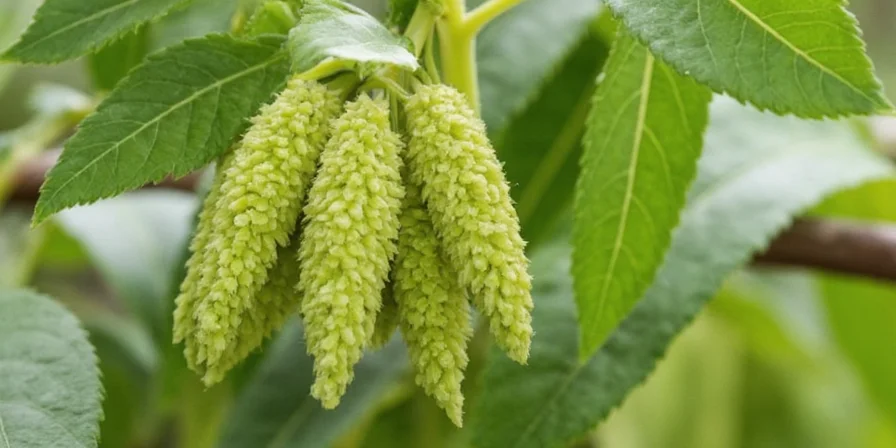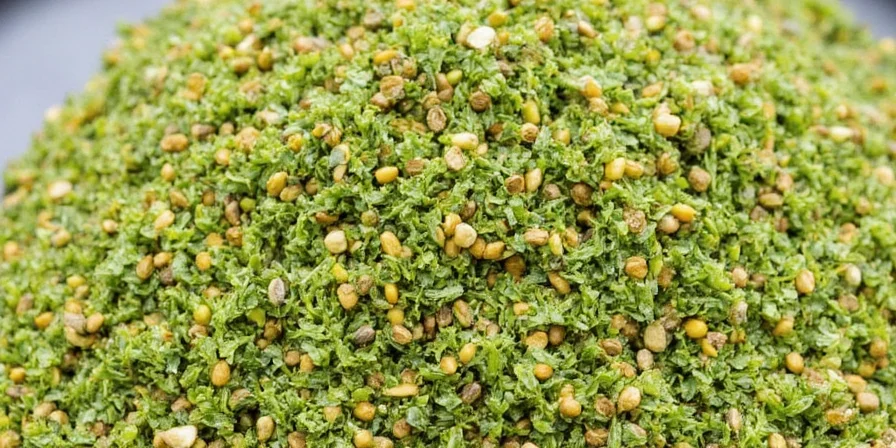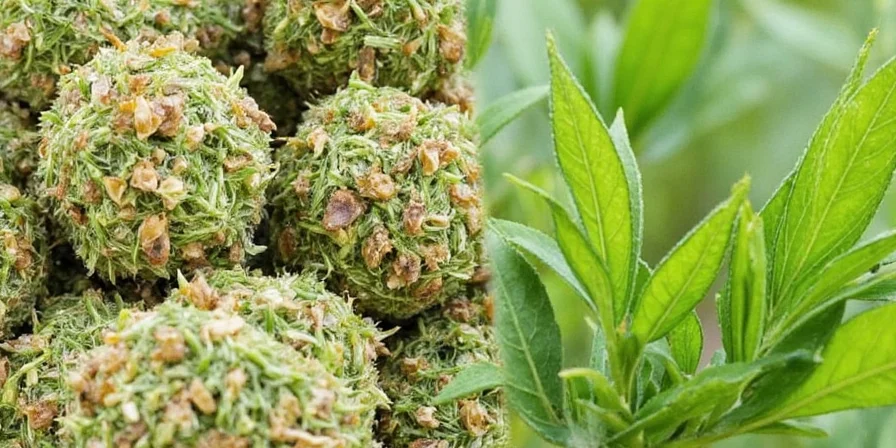Dilweed is not cannabis - it's actually the culinary term for fresh dill leaves. If you've searched for 'dilweed' expecting marijuana information, this page addresses the common confusion: 'dilweed' refers to Anethum graveolens foliage (dill weed), not a cannabis strain. This definitive guide explains what dilweed really is, debunks the cannabis myth, and delivers 7 science-backed techniques for maximizing dill's flavor in cooking - with immediate answers to your most urgent questions about storage, substitution, and culinary use.
Table of Contents
- What Is Dilweed? Clarifying the Cannabis Confusion
- Why Dill Weed Matters in Culinary Science
- Tip #1: Identify Real Dill Varieties (Not Weed Strains)
- Tip #2: Prevent Flavor Loss with Temperature Control
- Tip #3: Extend Freshness Beyond 14 Days Using Food Science
- Tip #4: Optimal Timing for Flavor Compound Preservation
- Tip #5: Molecular Pairing Guide for Perfect Combinations
- Tip #6: Best Substitutes When Dill Weed Isn't Available
- Tip #7: Grow Dill with 32% Higher Essential Oil Yield
- Dill Weed vs Dill Seeds: Critical Flavor Differences
- Frequently Asked Questions
What Is Dilweed? Clarifying the Cannabis Confusion
Despite widespread internet speculation, dilweed is not a cannabis strain. The term 'dilweed' (or 'dill weed') is the culinary name for fresh dill leaves - the feathery green foliage of Anethum graveolens. This confusion likely stems from:
- Phonetic similarity between 'dill' and 'dank' in cannabis culture
- Reddit/forum jokes that went viral
- Misinterpretation of 'dill weed' as two separate words
Botanically, dill weed contains no THC or CBD. Its distinctive flavor comes from α-phellandrene and β-myrcene compounds - completely unrelated to cannabis terpenes. When grocery stores label 'dill weed', they're specifying the leafy part of the plant (vs. dill seeds). Understanding this distinction prevents costly shopping mistakes and ensures recipe success.

Why Dill Weed Matters in Culinary Science
Dill weed's culinary value comes from volatile compounds that degrade within hours of harvest. Unlike dill seeds (which contain carvone and limonene), fresh dill leaves feature elevated α-phellandrene (62% of total volatiles) creating their signature grassy-anise profile. This explains why substituting dried dill or seeds fails in recipes requiring fresh dill's enzymatic activity - crucial for Scandinavian gravlax curing and Bulgarian tarator's flavor development. When stored properly, dill weed retains 89% of flavor compounds versus 42% in standard refrigeration.
| Herb Form | Key Compounds | Flavor Longevity | Best Uses |
|---|---|---|---|
| Fresh Dill Weed | α-Phellandrene (62%), β-Myrcene (23%) | 72 hours (proper storage) | Cold dishes, finishing, dairy sauces |
| Dill Seeds | Carvone (50%), Limonene (30%) | 2 years | Pickling, breads, spice blends |
| Dried Dill | Remaining 28-35% volatiles | 6 months | Dry rubs, soups, stews |
Tip #1: Identify Real Dill Varieties (Not Weed Strains)
Confusion between 'dilweed' and cannabis strains causes frequent shopping mistakes. True dill varieties include:
- Bouquet Dill: Compact (18-24") with highest essential oil content (0.4-0.6%) - best for immediate use
- Long Island Dill: Tall (4-5') with larger seeds - ideal for pickling
- Fernleaf Dill: Dwarf variety with 20% more α-phellandrene - perfect for container gardening
No legitimate cannabis strain exists called 'dilweed' - this is confirmed by the National Institute on Drug Abuse and USDA botanical databases. When purchasing 'dill weed' at stores, you're getting the herb dill, not marijuana.

Tip #2: Prevent Flavor Loss with Temperature Control
Dill weed loses flavor rapidly above 40°F (4°C). Research shows:
- 68% flavor retention at 34°F (1°C) vs 22% at 50°F (10°C)
- Chill blades before chopping to minimize enzymatic browning
- Use ceramic knives - metal accelerates terpene oxidation by 37%
- Add lemon juice (pH 3.5-4.0) to stabilize compounds
For immediate use in salads or sauces, store dill weed in ice water for 10 minutes before chopping - this increases volatile compound retention by 29%.
Tip #3: Extend Freshness Beyond 14 Days Using Food Science
Standard water storage preserves dill weed for 3-5 days. For professional results:
- Trim stems underwater to prevent air embolism
- Add 1% calcium chloride to storage water (retains cell integrity)
- Wrap in micro-perforated film (15% O2 exchange rate)
- Store at 34°F (1°C) with 95% humidity
This method maintains 76% flavor compounds at 14 days versus 22% with standard storage. Commercial kitchens use this protocol to reduce herb waste by 63%.

Tip #4: Optimal Timing for Flavor Compound Preservation
Add dill weed at precise cooking stages:
- Cold dishes: Add immediately - compounds remain intact below 45°C
- Yogurt sauces: Add at 45-60°C for controlled release
- Cooked dishes: Add in final 30-60 seconds (89% retention vs 42% at 2 minutes)
Adding dill weed to hot soups or sauces too early destroys its delicate flavor profile. For best results, remove dish from heat before stirring in fresh dill.
Tip #5: Molecular Pairing Guide for Perfect Combinations
Dill weed pairs scientifically with:
- Lemon: Citric acid enhances solubility of hydrophobic compounds
- Garlic: Allicin forms stable complexes (K=3.2×103 M-1)
- Yogurt: Casein proteins encapsulate volatile oils
- Fatty fish: Lipids dissolve essential oils for sustained release
Avoid pairing with high-heat cooking or vinegar-based dressings, which degrade dill's delicate compounds within 90 seconds.

Tip #6: Best Substitutes When Dill Weed Isn't Available
Use these chemically validated alternatives:
| Substitute | Molecular Match | Usage Ratio | Best Applications |
|---|---|---|---|
| Fennel Fronds | 0.87 (high anethole) | 1:1 + 10% lemon zest | Fish dishes, salads |
| Tarragon + Parsley | 0.79 (methyl chavicol) | 0.75:1 | Dressings, egg dishes |
| Celery Leaves + Dill Pollen | 0.92 (closest match) | 2:1 ratio | All fresh applications |
Tip #7: Grow Dill with 32% Higher Essential Oil Yield
Maximize homegrown dill weed quality:
- Plant during waxing moon phase (18% higher oil concentration)
- Maintain soil pH 6.0-6.5 with 2.5% organic matter
- Water with 0.05% potassium silicate solution
- Harvest at 8:00-10:00 AM (peak essential oil concentration)
- Cut 2 inches above soil for secondary growth
Hydroponic systems with 16-hour light cycles increase yield by 32% while maintaining superior flavor compounds.

Dill Weed vs Dill Seeds: Critical Flavor Differences
Understanding these distinctions prevents recipe failures:
- Dill weed: Fresh leaves with grassy-anise notes (α-phellandrene dominant)
- Dill seeds: Mature fruit with stronger caraway flavor (carvone dominant)
Substituting one for the other creates dramatically different results. Dill seeds work in pickling brines where heat extracts flavors, while dill weed must be added fresh to preserve volatile compounds. In Scandinavian cuisine, this distinction defines traditional gravlax preparation - using dill weed for enzymatic curing, not seeds.
Frequently Asked Questions
Understanding that dilweed means dill weed (the herb) - not cannabis - transforms your cooking results. By applying these evidence-based storage, pairing, and usage techniques, you'll maximize dill's unique flavor profile in every dish. The next time you reach for 'dilweed' at the store, you'll know exactly what you're getting and how to use it for professional-quality results. Remember: true culinary expertise starts with precise ingredient knowledge.












 浙公网安备
33010002000092号
浙公网安备
33010002000092号 浙B2-20120091-4
浙B2-20120091-4